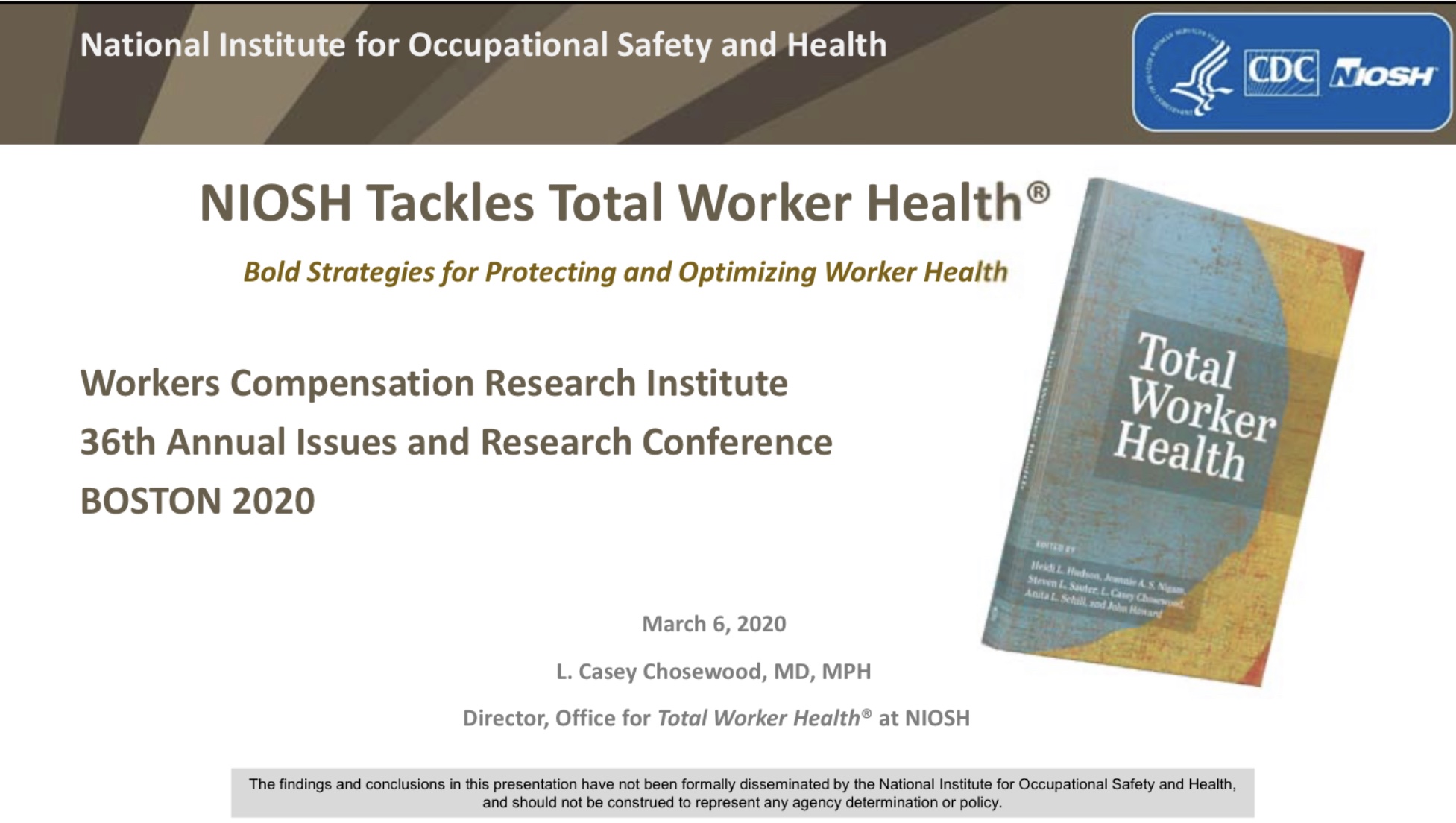NIOSH Tackles Total Worker Health
At the 2020 WCRI Annual Issues & Research Conference, Dr L. Casey Chosewood from the National Institute of Occupational Safety and Health (NIOSH) talked about their efforts around total worker health.
Total worker health is defined as policies, programs and practices that integrate protection from work-related safety and health hazards with promotion of injury and illness prevention efforts to advance worker well-being.
The five essential elements of Total Worker Health are:
- Demonstrate leadership commitment to worker safety and health at all levels of the organization.
- Design work to eliminate or reduce safety and health hazards and promote worker well-being.
- Promote and support worker engagement throughout program design and implementation.
- Ensure confidentiality and privacy of workers.
- Integrate relevant systems to advance worker well-being.
Work is so influential to our overall health and well being. Work impacts so many social determinants of health in both positive and negative ways. A total worker health initiative needs to consider both occupational and non-occupational issues.
There are many chronic diseases that are in some way related to work at least some of the time. This includes some cancers, heart disease, and hearing loss. Work also influences certain behaviors such as smoking.
Certain occupations are more prone to health risks than others. For example, the obesity rate for over-the-road truckers is near 80%. The sedentary nature of the job is not the only risk. People tend to eat more and smoke more to overcome long periods of boredom. The constant vigilance their job requires also tends to adversely impact health.
Shift work has been associated with elevated risk of cancer, heart disease, diabetes, obesity, and stroke.
Low wage workers are particularly at risk. They tend to work in more hazardous jobs, less job security, and often they are working part-time jobs without benefits.
The opioid epidemic and work are closely tied. From 2016-2017 the leading cause of death on the workplace was accidental drug overdose. There is no denying that the opioid epidemic is having an adverse impact on employers, even if they do not realize it.
Protecting and expanding the mental health of our workforce is also very important. This cannot be an add-on to your benefits, it has to be part of your culture. Diminishing stigma and raising awareness are good starting points. Supervisors need training in helping others with mental health challenges. Privacy and confidentiality are key components in supporting worker mental health.



